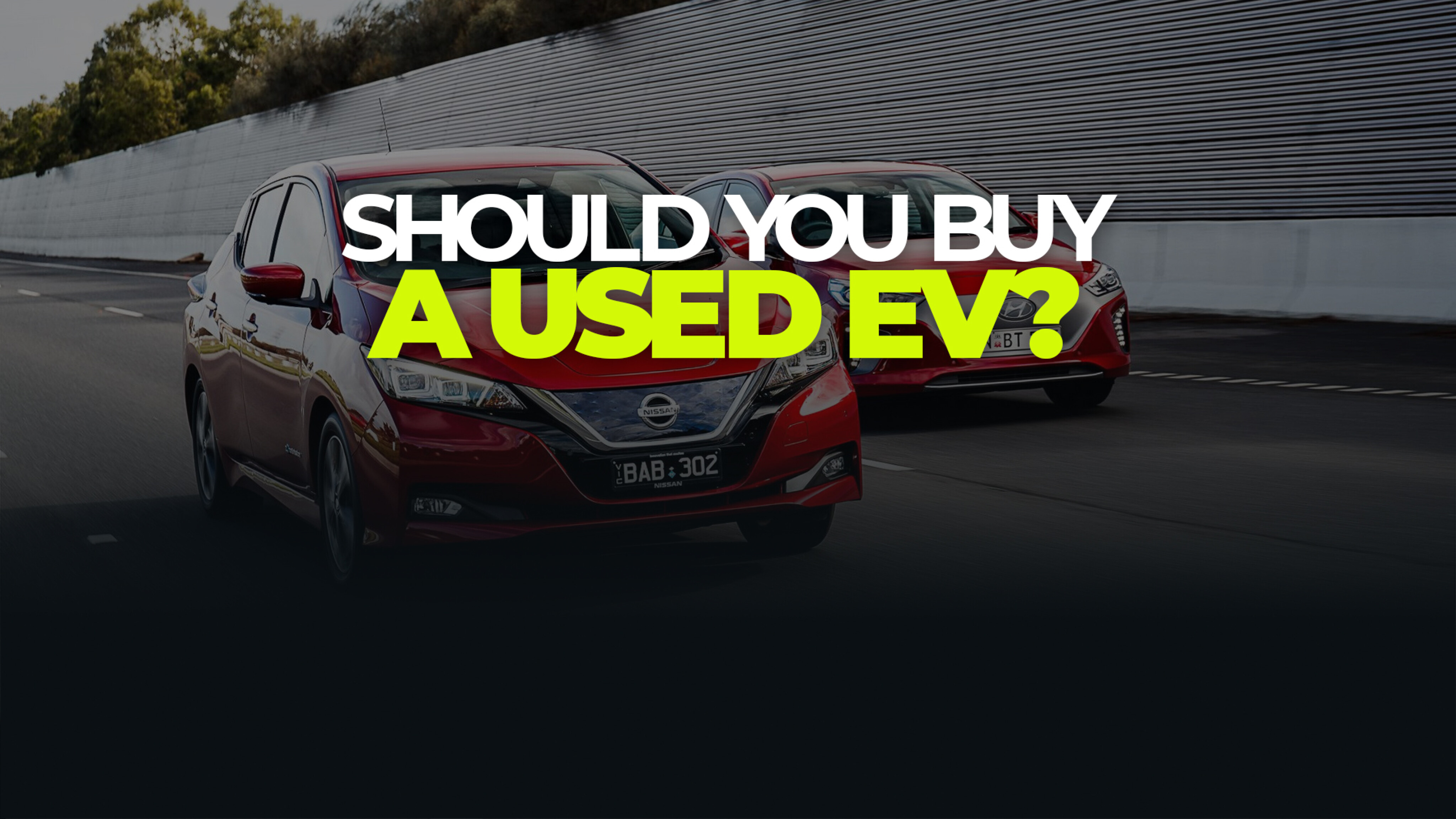
Is it time to buy a second-hand EV?
Well, yes, actually. They're not getting any cheaper as a brand-new option, and the waits can be long. Getting into a used EV right now could be just what you need.
Snapshot
- More affordable used EV options are slowly flowing into the market
- But, pay attention to battery health, brake corrosion, tyres
- Imported used EVs are an option, but buyer beware
Brand-new electric cars won’t be less than $30,000 anytime soon in Australia. But, as more new EVs are sold, the range of affordable used market EVs is growing.
Despite EVs being cheaper overall to own, price remains the key barrier to adoption.
The answer? Second-hand EVs are trickling into the used market to improve accessibility.
Buying used is also more environmentally sustainable and the higher depreciation rates for EVs (for now) benefits buyers, too.
If you can find a reasonably well-priced example in good condition – and if it suits your driving needs – the answer could easily be 'yes'. But, there are some important considerations when looking for a used EV.
JUMP AHEAD
- 🧐 Used EV depreciation
- ✅ Used EV checklist: Everything you need to know
- 📈 What used EVs are available in Australia? Ballpark prices
- 😎 The road ahead
- 🤔 Time to make the electric switch?
🧐 Why do EVs depreciate more?
Electric vehicles generally depreciate quicker than traditional internal combustion engine (ICE) models today, which is a win for would-be used EV buyers.
Despite evidence highlighting that short-life EV batteries are untrue, driving range is more than sufficient for most Australians’ daily needs (even with degradation) and public charging availability and unreliability shouldn’t be a concern (if you can plug in at home), there’s still hesitancy from buying ‘new technology’ EVs.
New EVs are also generally more expensive to buy, especially older models, which have contributed to how they lose their residual values. However, some are on par – if not better – than ICE rivals, according to Redbook data.
“There’s a depreciation cliff coming for [ICE cars]” – Luke Todd, EVDirect CEO (BYD distributor).
| EV model | Minimum trade-in depreciation | ICE model | Minimum trade-in depreciation |
|---|---|---|---|
| 2012 Nissan Leaf | - 88% | 2012 Hyundai i30 Premium (petrol) | - 70% |
| 2016 Tesla Model S 75 (RWD) | - 59% | 2016 BMW 520d Luxury Line | - 64% |
| 2018 Hyundai Kona Electric Highlander | - 39% | 2018 Hyundai Kona Highlander (FWD) | - 41% |
| 2019 Tesla Model 3 Standard Range Plus | - 51% | 2019 Mercedes-Benz C200 sedan | - 43% |
Data estimated based on minimum dealer trade-in residual values, according to Redbook. Redbook tends to give more conservative depreciation estimates and the above serves as a rough guide only.
Residual values fluctuate depending on the market and selling privately will likely fare better.
On the other hand, ICE cars – especially diesel – are falling out of favour, and the tide is expected to turn in favour of EVs.
Almost every car brand has committed to only sell zero exhaust emission EVs in the coming years to comply with increasingly strict emissions, fuel economy and noise mandates globally.
And, as more buyers are educated about the reality of EVs, the future of petrol and diesel cars look bleak and is starting to be seen as outdated technology in Australia, especially post Volkswagen’s infamous Dieselgate scandal.
EVDirect chief executive executive Luke Todd (the distributor of BYD electric cars in Australia) previously told WhichCar: “There’s a depreciation cliff coming for [ICE cars].”
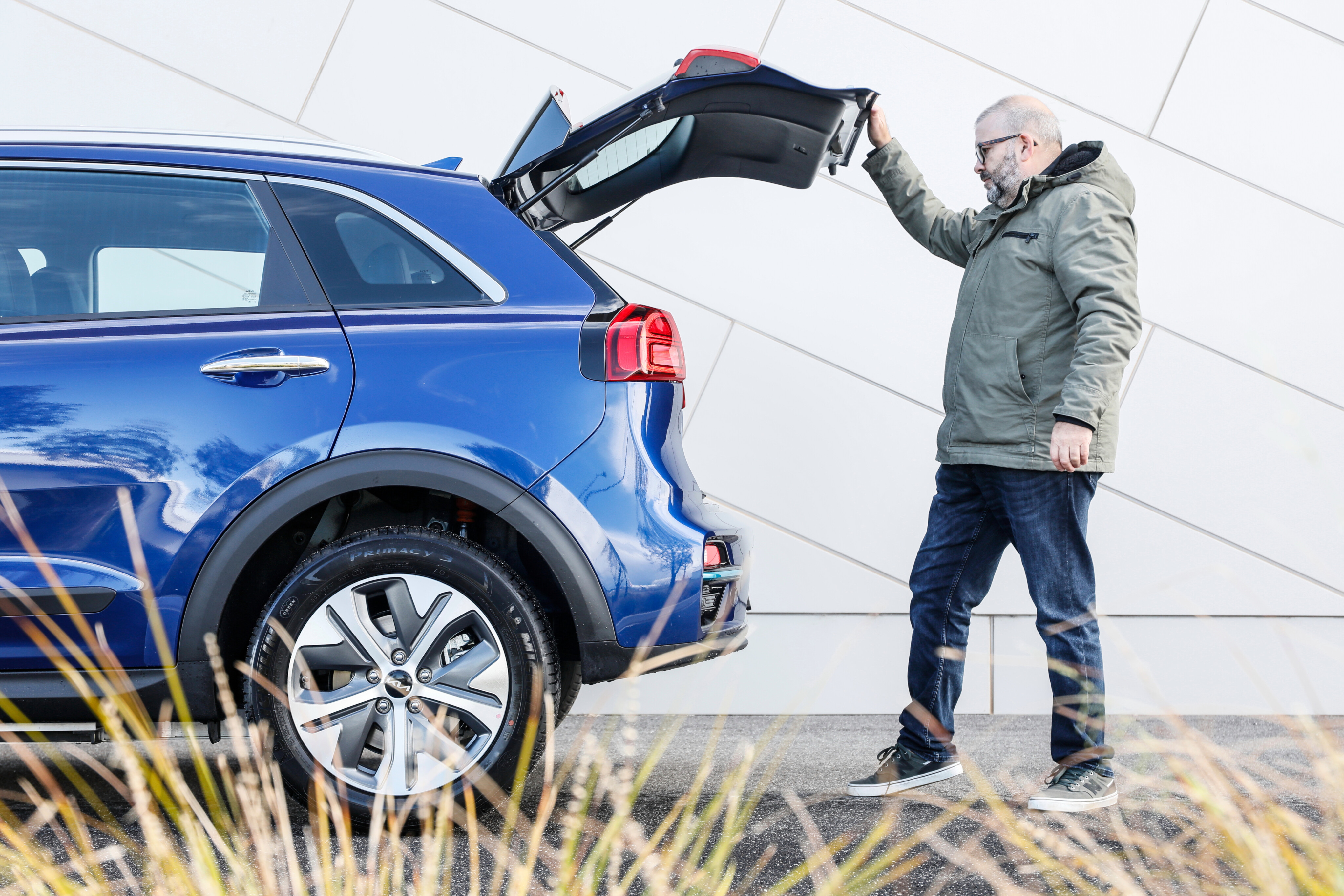
✅ Used EV checklist: Here’s everything you need to know
As with buying any used car, take the usual precautions.
This includes; checking its roadworthiness, exterior and interior condition, history and servicing logbook records.
EVs still need some routine maintenance as they share many ‘consumables’ with petrol and diesel vehicles, including tyres, brakes, suspension, lights, electronics, and the 12-volt electronics battery.
While Tesla, BMW and Mini adopt a condition-based servicing scheme instead of set intervals, regular checkups are still recommended for specific parts – so it’s a misnomer to claim ‘electric cars don’t need servicing’ in their lifetime.
Additionally, there are also EV-specific considerations.
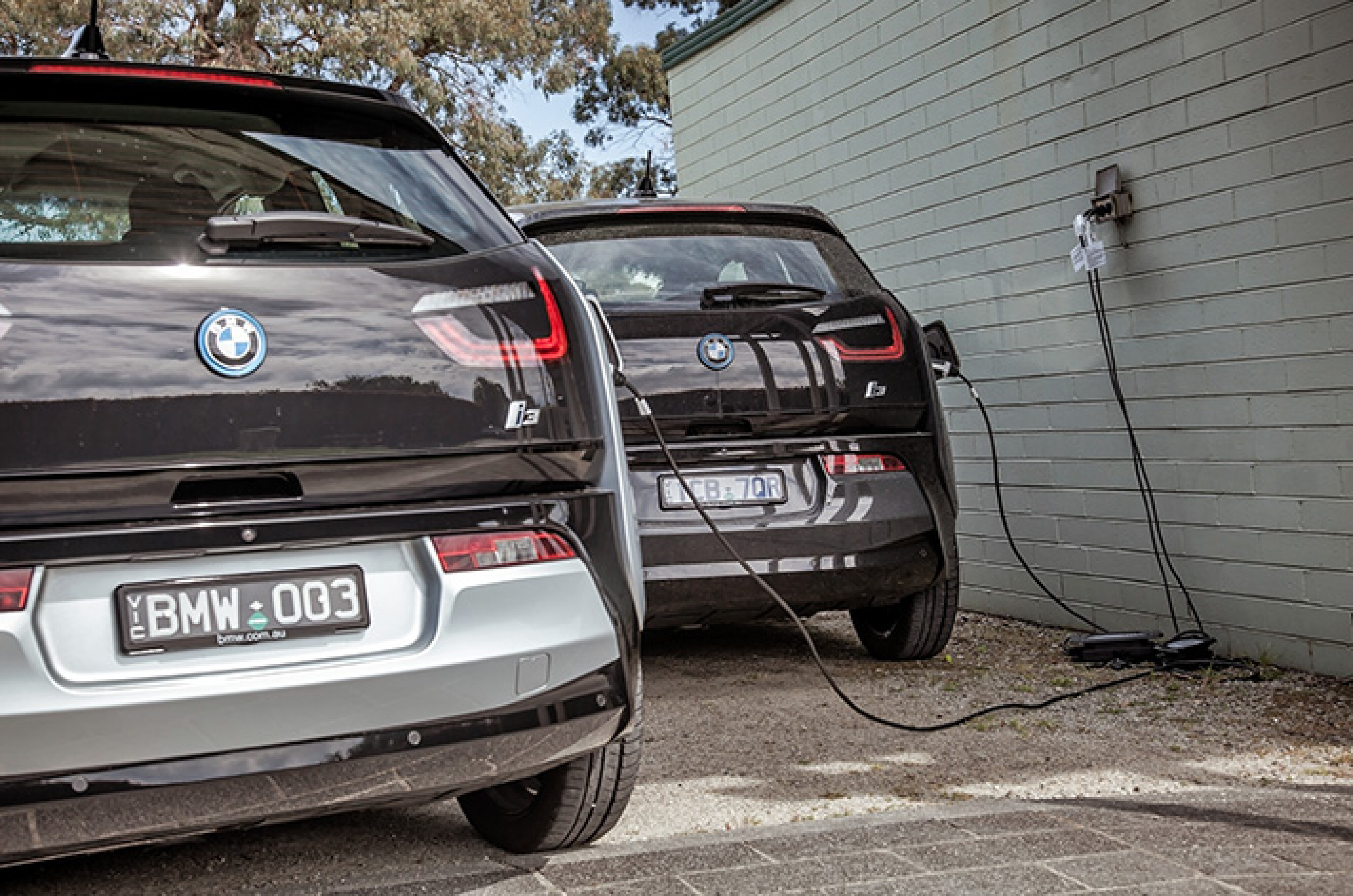
🪫 Battery health: Electric car batteries degrade over time
The good
- EV batteries are designed to last beyond 10 years with minimal range loss
- All new EVs are covered by a dedicated battery warranty
The not so good
- Used EVs inevitably have degraded batteries
- There's no straightforward way to check battery health, but there are signs
Similar to petrol and diesel combustion engines becoming less efficient over time, electric car batteries do naturally degrade.
This especially applies when the vehicle has been driven more and subject to harsher environments – such as extreme low or high temperatures – for extended periods.
Nearly all EV models – except for the including the first- and second-generation Nissan Leaf small hatchback – have sophisticated liquid-cooling systems to actively keep the battery in its optimum temperature range to prevent excessive degradation.
A used model that has a bigger, longer range battery would simply give more degradation leeway and the confidence of providing enough driving range for your daily needs down the line.
Additionally, all brands provide dedicated battery warranty coverage (typically eight years/160,000km), so it’s worth looking at a used EV that has some remaining.
Some brands even promise they won’t degrade more than 30 per cent of its capacity in the coverage period.
If there’s an issue – and if deemed eligible – car brands can replace individual modules (or the whole pack if needed) for free.
👉 How to check EV battery health
Unfortunately, there is currently no easy way to accurately check an EV’s battery health.
However, an emerging number of EV-centric used car dealers are providing an estimated state-of-health reading by plugging in an on-board diagnostic (OBD) device.
Technicians also usually diagnose and generate a battery health report when it comes to scheduled logbook servicing.
But, be aware that the battery management system (BMS) may not be calibrated properly and show accurate battery percentage and remaining range indicators.
For example, first-gen Nissan Leafs feature a 12-bar state-of-health indicator in the driver instruments, but they aren’t linear and aren't always accurate, according to battery electrochemist Dr Euan McTurk [Mr. EV YouTube↗].
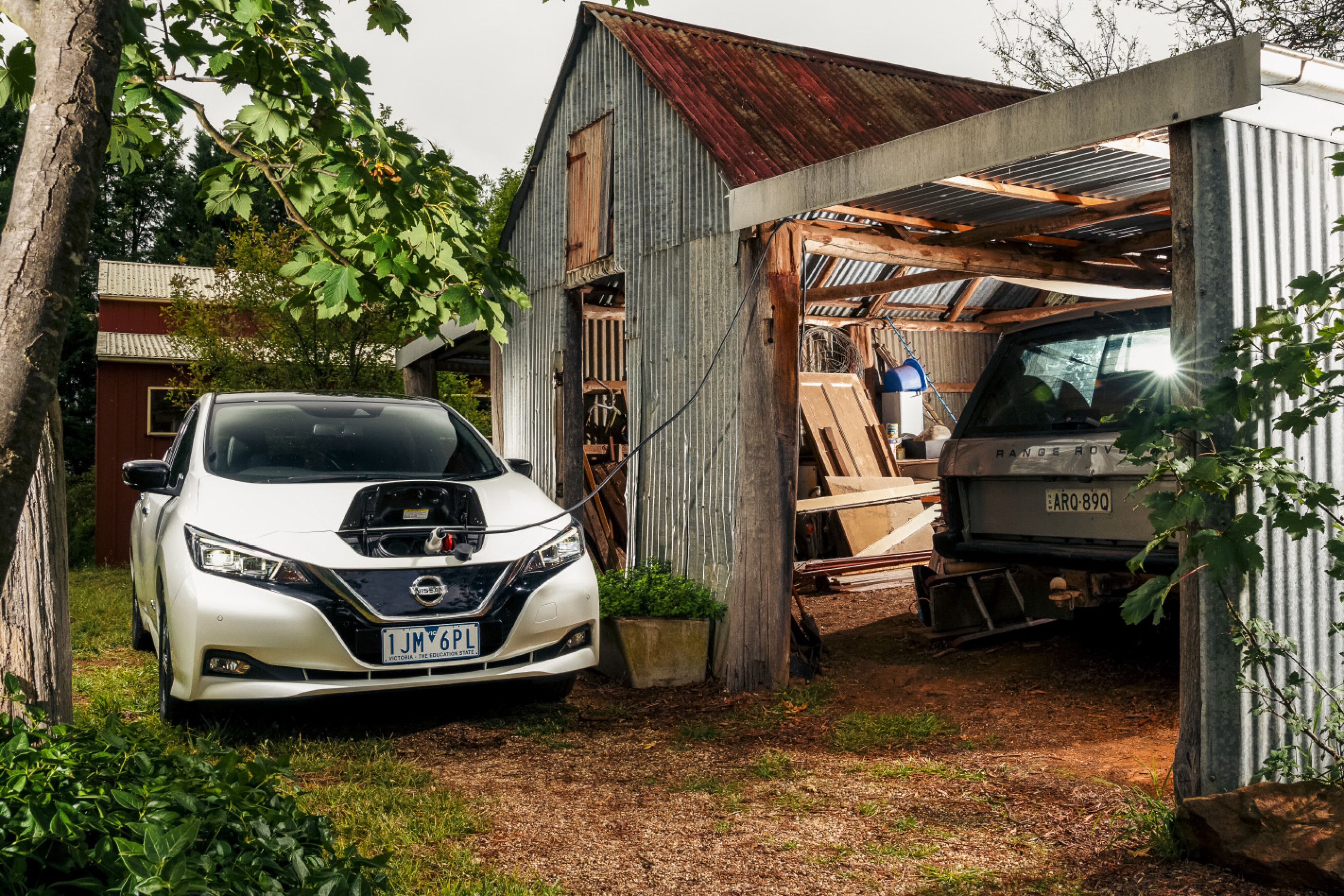
⚡️ Charging habits: AC or DC, 80% or full?
The good
- Manufacturers generally recommend 80% everyday charging limits for lithium-ion batteries
- LFP batteries can generally be fully charged everyday
The not so good
- It’s difficult to reliably know previous owner/s charging habits
- Frequent DC charging isn’t ideal (particularly previous owners who couldn’t home charge)
How previous owners charge their electric car is also a sign of the battery condition.
To maintain good battery health, it’s best practice to predominantly charge on slow AC power. This includes standard three-pin home power plugs and installed AC wall boxes.
Regularly charging on pricier public DC fast charging stations – such as on Chargefox, Evie Networks and Tesla Superchargers – tends to stress the battery more by generating more heat with every session.
This leads to a higher chance of degradation, especially when charged in more extreme cold or hot climates.
Additionally, car brands generally recommend recharging lithium-ion batteries up to 80 per cent only, as it’s unhealthy to be in a high state for extended periods.
Likewise, keeping the battery too low under 20 per cent all the time isn’t ideal.
Conversely, cobalt-free lithium-iron-phosphate (LFP) batteries can generally be fully charged to 100 per cent without major degradation concerns. This includes models, including the base MG 4 Excite 51, BYD Atto 3, Tesla Model 3 RWD, and Model Y RWD.
👉 How to check charging habits
If you’re able, ask the owner’s AC/DC charging habits and see whether a charge limit has been set previously (an automatic cut-off feature is offered in most models).
However, it’s difficult to get a reliable answer from a dealer or retailer.
Also consider where the vehicle has regularly been driven and where it’s been usually parked, as extreme cold or hot climates can signal a chance of higher degradation.

🛞 Tyre wear: Check tread depth
The good
- EV-designed tyres reduce the stress and wear
- Easy to check tread death
The not so good
- Powerful and instant torque, heavier weight contribute to wearing out tyres quicker
Since EVs are naturally heavier and feature instant torque, their tyres are typically under more stress than the average car.
Tyres can simply wear quicker than an equivalent petrol or diesel car’s tyres – especially if previous owner/s often drive and accelerate harder (a compulsion that is hard to avoid in an EV).
However, dedicated EV tyre models have emerged with a more durable structure and, while electric cars are typically heavier due to their large batteries, they’re not too dissimilar to the most popular vehicle models today.
A Tesla Model Y medium electric SUV is around 400kg heavier than the comparably-sized Toyota RAV4, but is roughly 400kg lighter than the also top-selling Ford Ranger 4x4 ute.
👉 How to check tyre health
When looking at a used electric car, check whether the tyre grooves are on the same level as the built-in nub which indicates tread wear.
Alternatively, measure the tread depth by putting a 20-cent coin into the tyre groove to see if it reaches the front bill of the platypus.
If yes, the vehicle needs new tyres.
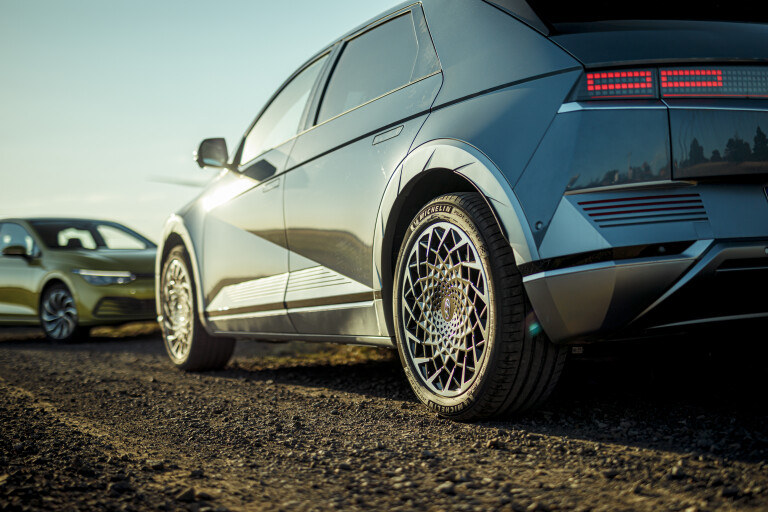
🛑 Brake corrosion
The good
- Regen braking limits brake use
- Turning off regen can clean the disc
- Some models use drum brakes, preventing corrosion
The not so good
- Rare brake use can lead to corrosion
Electric cars are more efficient than conventional ICE cars thanks in part to regenerative braking, but there is a downside.
It's the EV version of engine braking and owners gain back some ‘fuel’ in return. Conversely, this also means EV owners don't use the proper hydraulic brake as often and the disc can corrode over time.
All EVs use regen exclusively at the top of the pedal before applying the hydraulic brake, and some offer a one-pedal driving (strong regen) function.
Therefore, it’s good practice for owners to occasionally turn off the regen function to clean the brake disc.
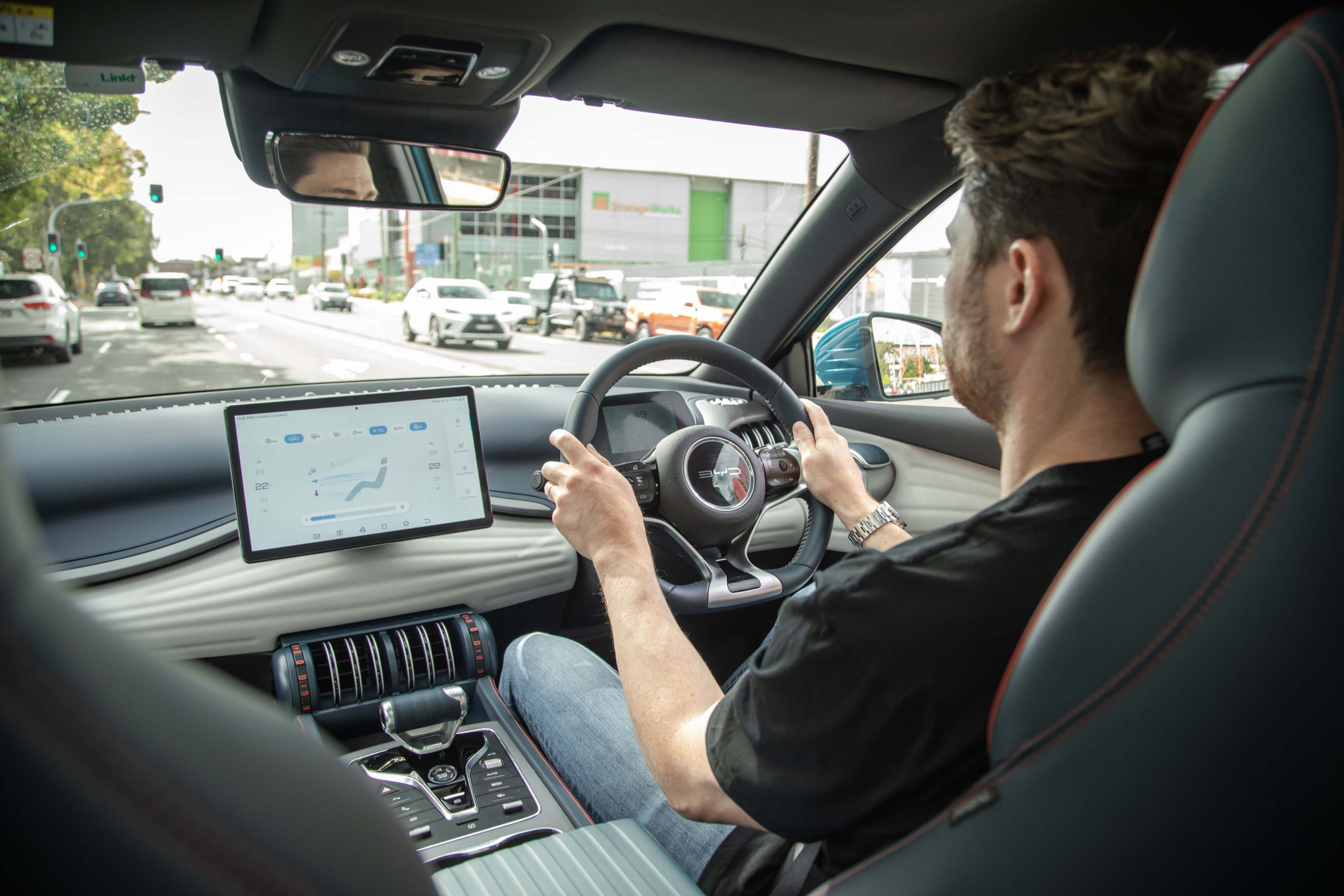
A rarely used and unloved brake may cause corrosion and need a replacement, so be wary when buying an used electric car.
👉 How to check for brake corrosion
Look for signs of brown rust on brake discs behind each alloy wheel. If there’s a plastic cover, you may need to remove it to inspect its condition.
Some corrosion can be cleaned off (and may simply be caused by high humidity), but intense rust may require a disc replacement.
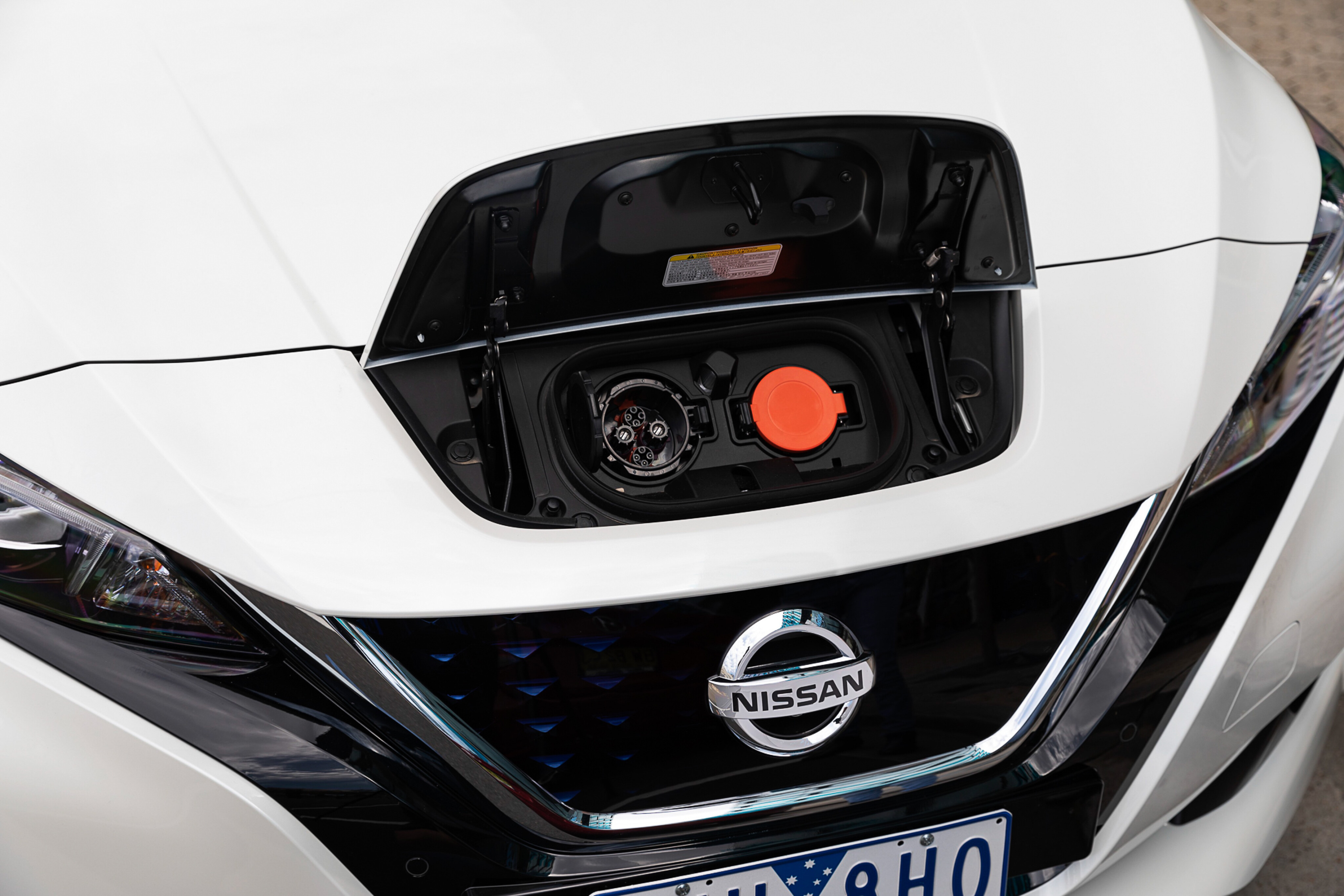
👀 Charging plug and cables
The good
- Most EVs and charging stations use Type 2/CCS2 plug standard
- Adapters enable use on modern connectors
The not so good
- Some Japanese models use the rare CHAdeMO standard
- Older models may have Type 1/CCS1 or modified Type 2
- Some new EVs don’t include essential charging cables
Not Type 2 CCS? Approach with caution...
Most car brands have adopted the charging connector type as the universal standard in Australia and Europe, but some are outliers.
Older used EV models may use an outdated plug type that won’t be compatible with public charging stations today and may require a sold-separately adapter.
While many DC fast charging stations still offer a CHAdeMO cable, an increasing number of newly-installed stalls from operators such as Engie (under the Chargefox platform), Evie Networks and BP Pulse are only providing CCS2 plugs at some sites.
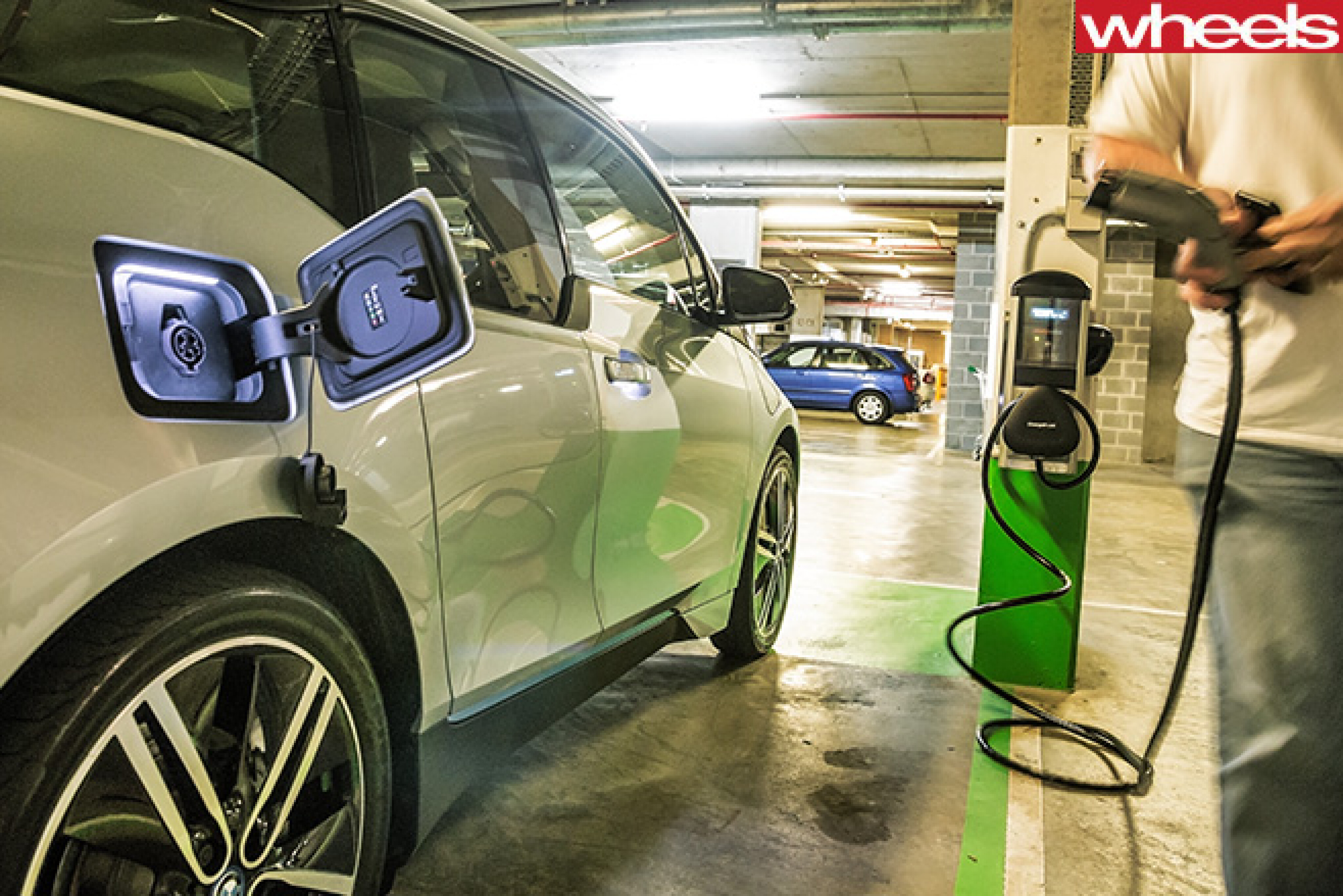
Used EV buyers should also check whether essential charging cables (eg: three-pin trickle charger, Type 2 to Type 2) and any other adapters are included with the vehicle.
If not, buying them separately can cost hundreds.
👉 Note to self
For example, the pre-2018 BMW i3 adopts the older Type 1 CCS standard and older pre-2020 Tesla Model S and Model X EVs have a modified Type 2 port.
Therefore, a Type 2 CCS adapter is required to use almost all AC and DC public charging stations in Australia.
Similarly, the first-gen Nissan Leaf uses the Type 1 port for slow AC charging and a Japanese-standard CHAdeMO port for fast DC charging. The latter is still found on second-gen Leafs, the Lexus UX300e, Mitsubishi Eclipse Cross PHEV and Outlander PHEV today, albeit using the common Type 2 plug for AC power.
However, there is no CHAdeMO to CCS2 adapter currently available.
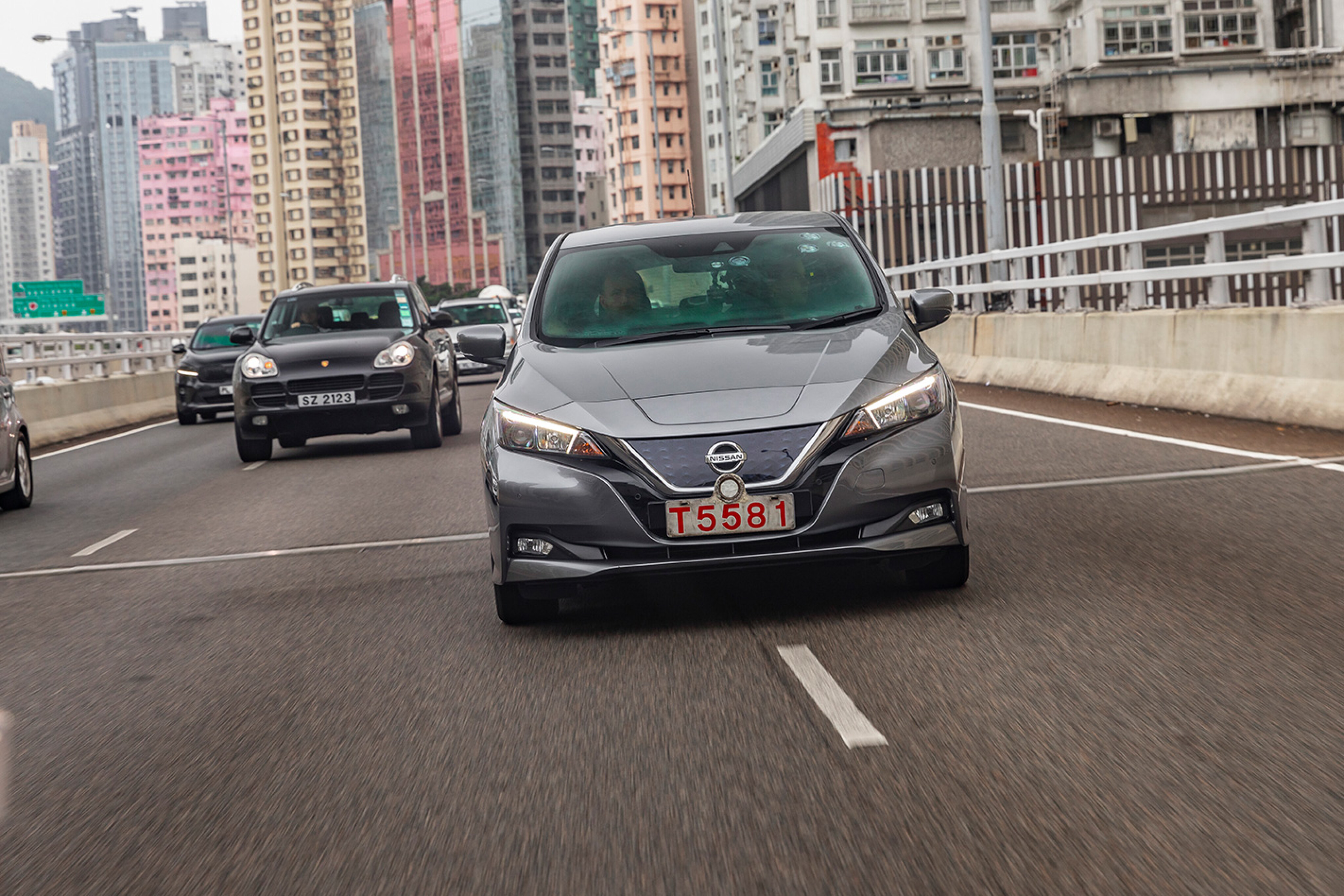
👨💻 Are imported EVs worth buying?
The good
- Generally cheaper than domestic offerings
- Unique model/features
- Limited warranty included by import reseller
The not so good
- No local OEM support for vehicle/battery warranty, maintenance and recalls
- Need to outsource servicing from third-party trained EV technicians
- Car insurance likely more expensive, only a handful provide cover
Some used electric cars are imported – primarily from Japan and the United Kingdom – where there is a larger EV market.
The most common models include; the Nissan Leaf, e-NV200, and Mitsubishi Minicab MiEV.
Imported EVs generally bring the price down further than buying a locally-available used EV since they've already been used by a previous owner/s overseas, and the variant usually has less standard features or even a smaller battery than what’s typically sold here.
Although the niche model and budget-friendly price tag may entice some from purchasing at a local dealer, imported EVs don't enjoy the same manufacturer warranties, servicing and support.
Still, imported examples are the most affordable way to get into an EV right now, so you'll need to weigh up the pros and cons.

📈 What used EVs are available in Australia? Ballpark prices (as of November 2023)
The choice of new electric car models has increased substantially in the past few years, as more Australians make the switch and businesses adopt EVs.
This comes after almost a decade of a market dominated by few models.
Government fleets, car rental and subscription companies – particularly for rideshare drivers – have taken on electric cars such as the Nissan Leaf, discontinued Hyundai Ioniq Electric, and Polestar 2. These will all flow onto the second-hand market in the coming years.
Likewise, the federal government's fringe benefits tax (FBT) exemption scheme is designed to encourage company fleets and employees on novated leases to choose an EV today in order to ultimately contribute to a larger and more affordable used EV market in the future.
Unfortunately, most first-car buyers can mainly choose the Nissan Leaf hatch for now, as the most common affordable used EV in Australia priced less than $30K. But, expect this list to grow.
Buyer beware
Some private and dealer used car listings are priced higher than buying new, primarily due to high demand and limited supply continuing on some models.
Estimated prices listed below are for key used models based on Carsales listings as at the time of publication. Table is sorted by cheapest to priciest.
| Used EV model | Model years | Estimated price range |
|---|---|---|
| Mitsubishi i-MiEV (incl. imports) | 2010-2012 | $5,000-$15,000 |
| Nissan Leaf (incl. imports) | 2012 onwards | $10,000-$70,000 |
| Nissan e-NV200 (imports only) | 2014-2016 | $25,000-$30,000 |
| Renault Zoe | 2017-2019 | $20,000-$30,000 |
| Renault Kangoo Maxi Z.E. | 2017-2021 | $20,000-$50,000 |
| MG ZS EV | 2020 onwards | $25,000-$60,000 |
| BMW i3 | 2014-2021 | $25,000-$60,000 |
| BYD T3 | 2021 | $30,000-$50,000 |
| BYD E6 | 2021 | $30,000-$50,000 |
| Mini Electric | 2020 onwards | $30,000-$60,000 |
| Hyundai Ioniq Electric | 2018-2021 | $30,000-$60,000 |
| Hyundai Kona Electric | 2018 onwards | $30,000-$70,000 |
| BYD Atto 3 | 2022 onwards | $40,000-$50,000 |
| Tesla Model 3 | 2019 onwards | $40,000-$120,000 |
| Kia Niro EV | 2021 onwards | $40,000-$80,000 |
| Kia Niro Plus EV | 2023 | $50,000-$60,000 |
| Polestar 2 | 2021 onwards | $50,000-$100,000 |
| Tesla Model S | 2014-2020 | $50,000-$160,000 |
| Tesla Model Y | 2022 onwards | $60,000-$120,000 |
| Volvo XC40 Recharge | 2021 onwards | $60,000-$100,000 |
| Jaguar I-Pace | 2018 onwards | $60,000-$180,000 |
| Tesla Model X | 2017-2020 | $70,000-$220,000 |
| Mercedes-Benz EQC | 2019-2023 | $80,000-$140,000 |
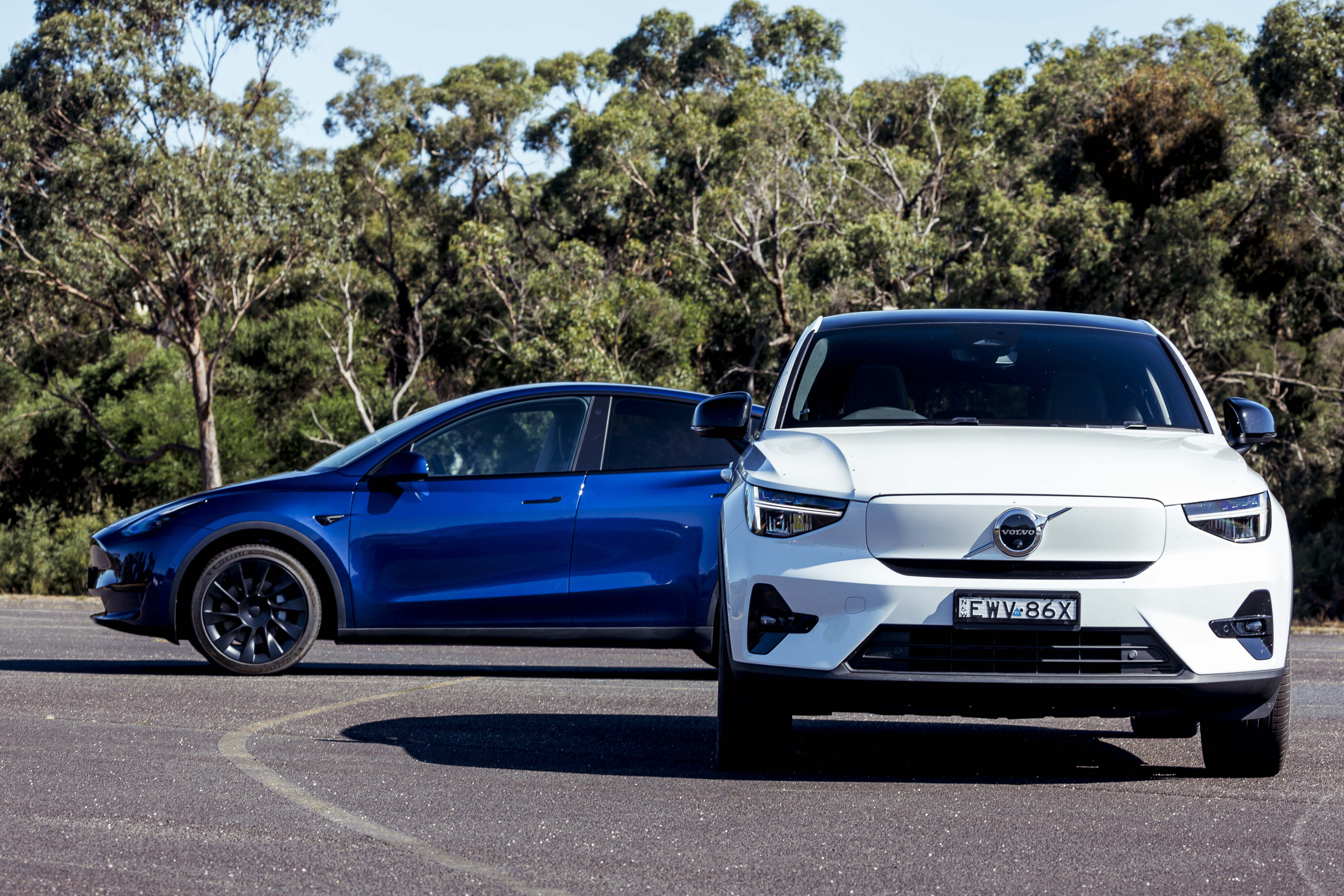
😎 The road ahead
Australia's used electric car market is still in its infancy, but that’s set to change in the coming years.
There are still a limited number of options today but, as EV sales continue to increase, more new models are arriving to lower the price barrier and they’ll be even cheaper in the second-hand market.
Look for the signs for a well-cared for EV, know how much driving range you really need everyday, and understand the concept of charging.
The tide is turning in favour of electric driving.
🤔 Is it time to make the electric switch?
EVs are not for everyone just yet, but they're right for most.
Battery longevity, servicing, and true sustainability remain key perceived issues. For more, check out our /Electric hub guides below.


COMMENTS